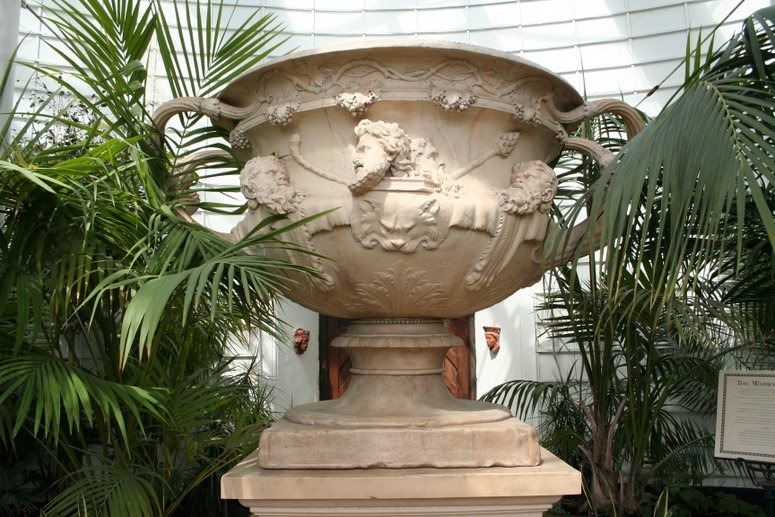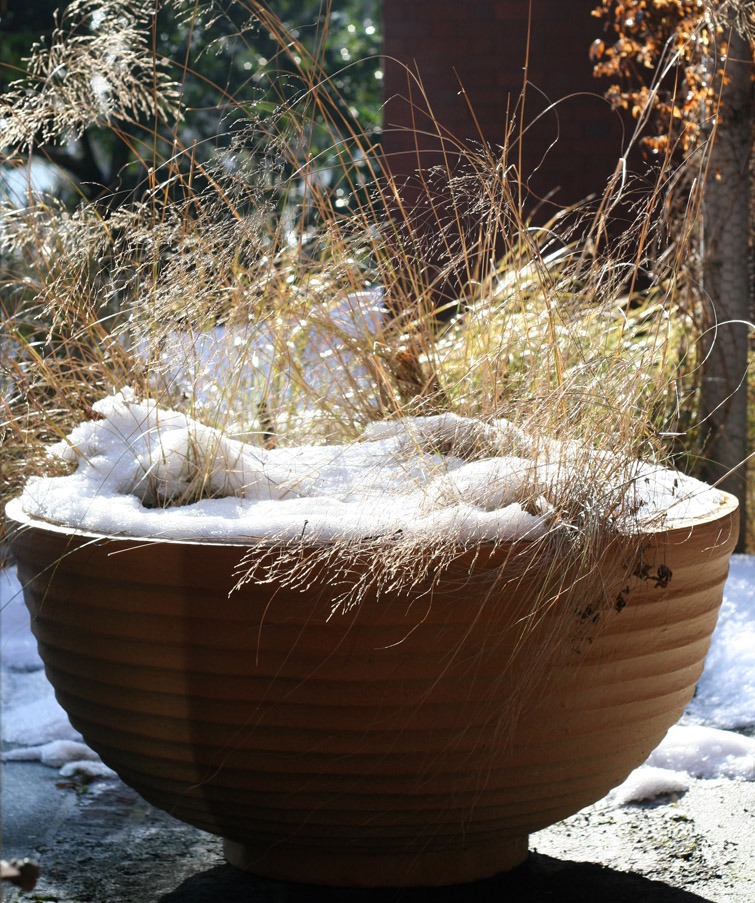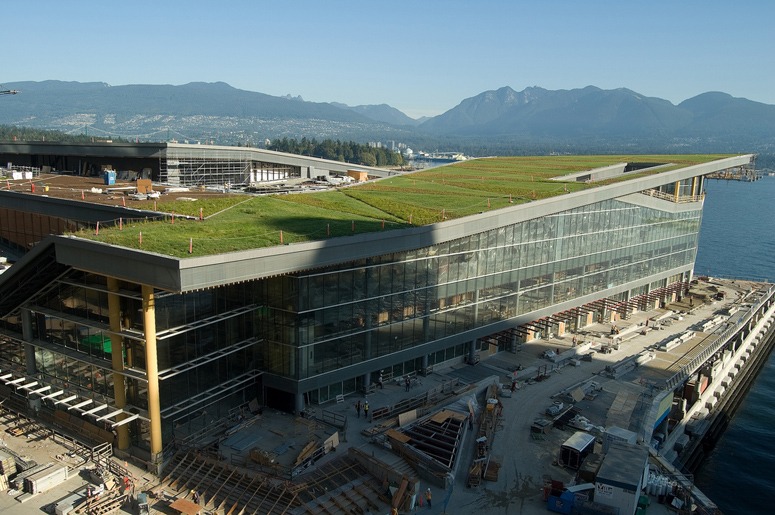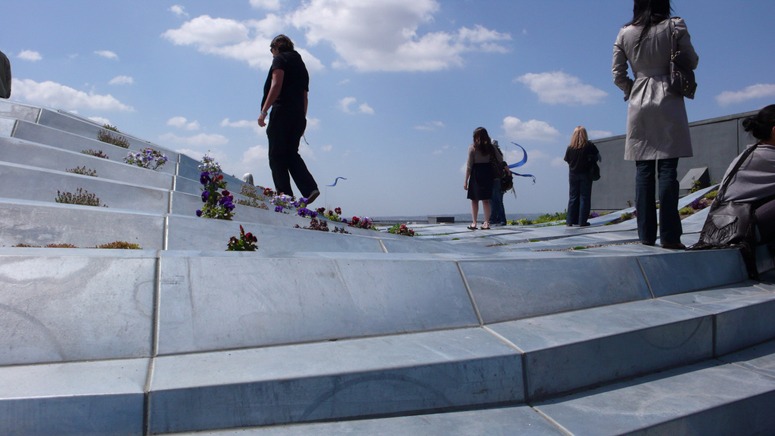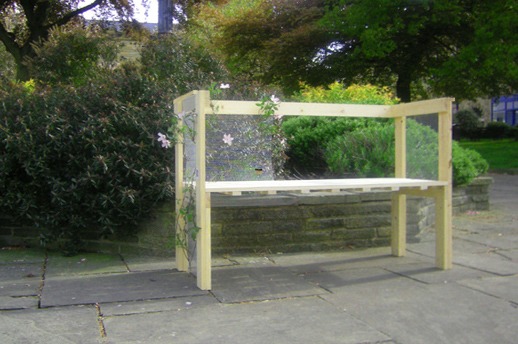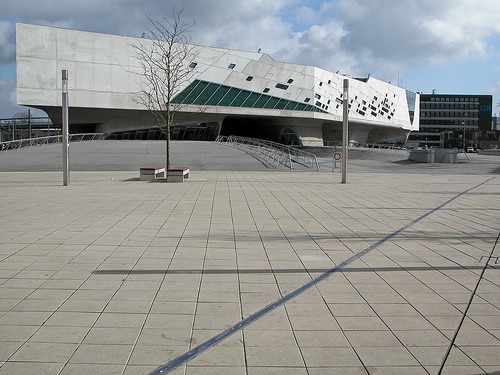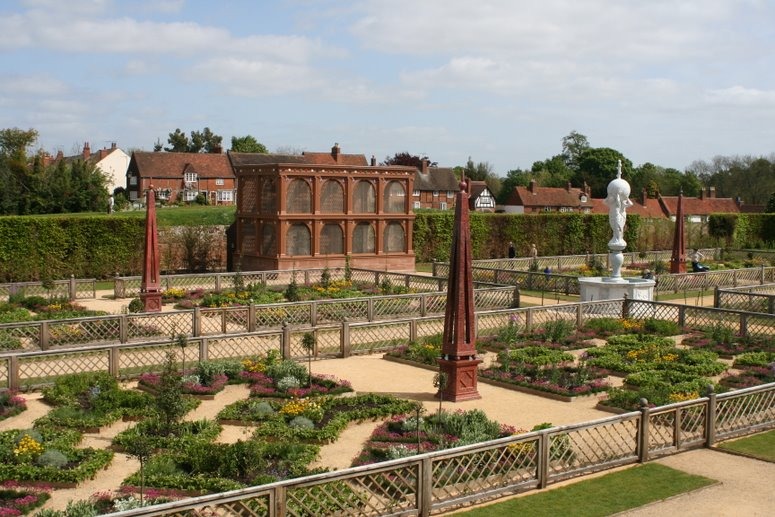
Kenilworth Elizabethan Castle Garden
It is not beautiful. This is the main problem with the Kenilworth Castle garden restoration. They should have put a talented garden designer in charge of the project, with instructions to listen to the historical experts and be sure to produce a beautiful result. Tudor craftsmanship was excellent. This project looks as though it belongs in an upscale garden centre near the M25. The aviary is too big. The fence is too low. The obelisks are too high. The lawn-fringed paths are a total historical anachronism. The elements of the composition are out of scale with each other. It does not have the charm of a medieval garden or the dignity of a renaissance garden. It is a codge-up.
Press coverage of this significant garden restoration has concentrated on the cost (£2.1m). I disagree: if anything the budget was too low for a worthwhile project, justified by (1) an archaeological investigation which found the base of the original marble fountain (2) the remarkably detailed description in the Robert Langham Letter, describing Queen Elizabeth I’s visit to Kenilworth Castle in 1575. An excerpt from this letter is quoted below. I worry about Simon Thurley’s garden judgement with regard to gardens. He made a similar mistake with the restoration of the Privy Garden at Hampton Court. There many other things which could have been done with the money – and I would rather have seen a re-creation of a medieval castle garden. We have enough Tudor re-creations from the BBC without EH jumping on this bandwagon – they must be wondering how they could manage some Jane Austen re-creations. If EH thought renaissance gardens looked like this, they should visit Italy and France.
An excerpt from Robert Langham’s letter about Queen Elizabeth I’s visit to Kenilworth Castle in 1575: “Along the castle wall is reared a pleasant terrace of a ten foot high and a twelve broad, even underfoot and fresh of fine grass, as is also the side thereof toward the garden, in which, by sundry equal distances, with obelisks, spheres and white bears all of stone upon their curious bases by good show were set; to these, two fine arbours redolent by sweet trees and flowers, at each end one…. Then, much graced by due proportion of four even quarters, in the midst of each upon a base a two foot square and high, seemly bordered of itself, a square pilaster rising pyramidally of a fifteen foot high, symmetrically pierced through from a foot beneath until a two foot from the top, whereupon, for a capital, an orb of a ten inches thick…Redolent plants and fragrant herbs and flowers, in form, colour and quantity so deliciously variant, and fruit-trees bedecked with their apples, pears and ripe cherries. And unto these in the midst against the terrace a square cage, sumptuous and beautiful, joined hard to the north wall…. In the centre (as it were) of this goodly garden was there placed a very fair fountain, cast into an eight-square, reared a four foot high, from the midst whereof a column up set in shape of two atlantes joined together a back-half, the one looking east, the other west, with their hands upholding a fair-formed bowl of a three foot over, from whence sundry fine pipes did lively distil continual streams into the receipt of the fountain”

